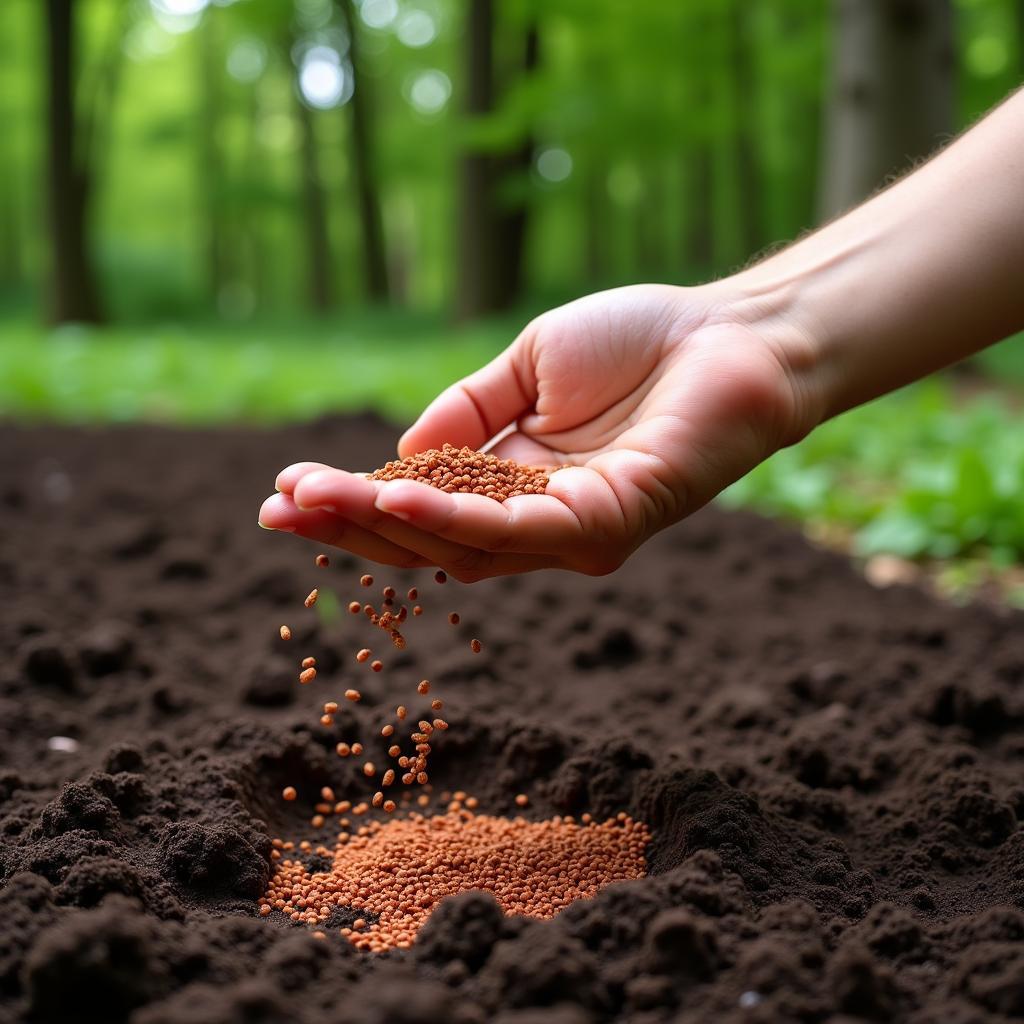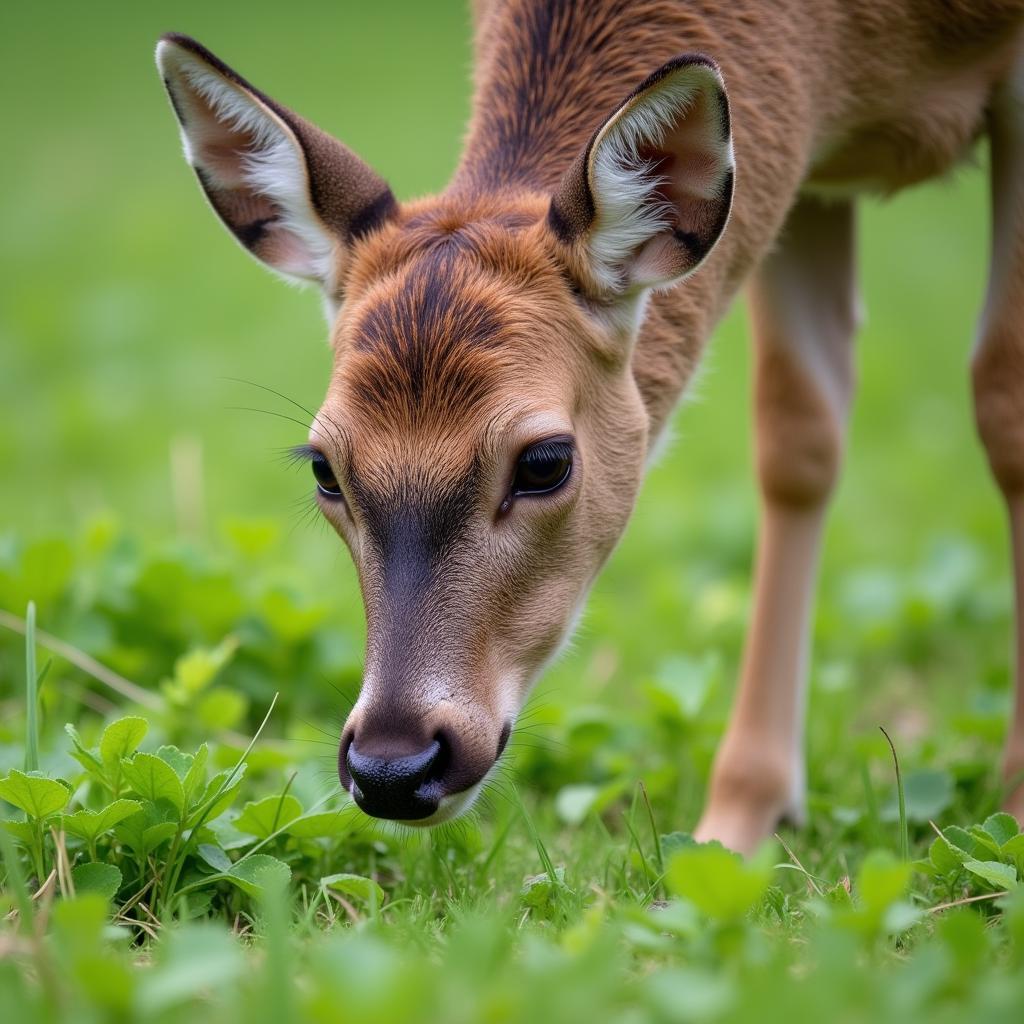Red Clover Food Plots offer an excellent way to attract and nourish wildlife, particularly deer. Red clover is a highly palatable and nutritious legume, rich in protein and vital minerals, making it an ideal food source for a variety of animals. This comprehensive guide will delve into the benefits of planting red clover, the steps involved in establishing a thriving plot, and expert tips for maximizing its effectiveness.
Choosing the right location for your red clover food plot is crucial. Ideally, select a sunny area with well-drained soil. While red clover can tolerate some shade, full sun exposure will promote optimal growth. A soil test can be invaluable in determining the pH and nutrient levels of your soil. Amend the soil as needed to achieve a pH between 6.0 and 7.0. This step ensures the red clover can effectively absorb nutrients and thrive. You can find more great food plot ideas at food plot ideas.
Preparing the Seedbed and Sowing Red Clover Seeds
Proper seedbed preparation is essential for successful red clover establishment. Till the soil thoroughly to remove any existing vegetation and loosen the soil structure. This creates a welcoming environment for the red clover seeds to germinate. Broadcasting or drilling are the two most common methods for sowing red clover seeds. Broadcasting involves scattering the seeds evenly over the prepared seedbed. Drilling, on the other hand, involves planting the seeds at a specific depth and spacing using a seed drill. For smaller food plots, broadcasting can be sufficient, but for larger areas, a woods food plot seeder for sale might be a worthwhile investment.
After sowing, lightly rake the seedbed to cover the seeds with a thin layer of soil. This helps protect the seeds from birds and other predators, and also promotes better soil contact. Adequate moisture is critical for germination, so be sure to water the seedbed thoroughly after planting, especially during dry periods.
 Preparing a Red Clover Seedbed
Preparing a Red Clover Seedbed
Maintaining and Managing Your Red Clover Food Plot
Regular maintenance is key to ensuring a healthy and productive red clover food plot. Weeding is essential, especially during the early stages of growth, to prevent competition for resources. Mowing can also be beneficial to control weeds and encourage bushier growth. Consider a woods food plot if you are planting in a wooded area. Furthermore, regular soil testing and fertilization can help maintain optimal nutrient levels for sustained growth and productivity.
“A healthy red clover food plot doesn’t happen overnight,” says expert wildlife biologist, Dr. Emily Carter. “Consistent maintenance, from weeding to soil testing, is crucial for long-term success.”
Extending the Benefits: Combining Red Clover with Other Food Plot Species
Red clover can be an excellent standalone food plot species, but it can also be effectively combined with other plants to provide a more diverse and attractive food source for wildlife. Mixing red clover with grasses like chicory or clover can create a highly nutritious and palatable forage blend. Consider planting spring and summer food plots for deer to provide year-round nutrition. Experimenting with different combinations can help you determine the most effective blend for your specific region and wildlife needs.
“Diversifying your food plot with a mixture of species can attract a wider range of wildlife,” adds Dr. Carter. “Red clover provides a strong foundation for a healthy and diverse ecosystem.”
Maximizing the Effectiveness of Your Red Clover Food Plot: Strategic Location and Scouting
The location of your red clover food plot plays a crucial role in its overall effectiveness. Choose a location that is easily accessible to wildlife, but also provides some cover from predators. Scouting for food patch locations can help identify ideal spots. Check out this helpful resource on scouting for food patch. Furthermore, consider planting multiple smaller food plots in different areas rather than one large plot. This can distribute the food source and encourage wildlife to explore different parts of your property.
 Deer Grazing in a Red Clover Food Plot
Deer Grazing in a Red Clover Food Plot
In conclusion, a red clover food plot is a valuable addition to any wildlife management strategy. By following these guidelines, you can create a thriving food plot that attracts and nourishes wildlife for years to come. Remember to maintain your plot regularly, and don’t be afraid to experiment with different combinations of species to find the perfect blend for your area. A well-maintained red clover food plot not only benefits wildlife, but also enhances the beauty and biodiversity of your property.
FAQ
- What is the best time to plant red clover?
- How much red clover seed do I need per acre?
- How long does it take for red clover to establish?
- What are the common pests and diseases of red clover?
- How often should I fertilize my red clover food plot?
- Can I plant red clover in shady areas?
- What are some other good food plot species to combine with red clover?
Need more help? Contact us at Phone Number: 02437655121, Email: minacones@gmail.com or visit us at 3PGH+8R9, ĐT70A, thôn Trung, Bắc Từ Liêm, Hà Nội, Việt Nam. We have a 24/7 customer service team.